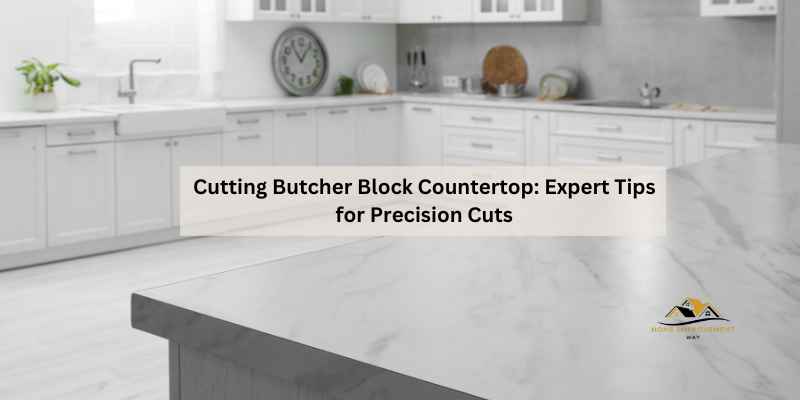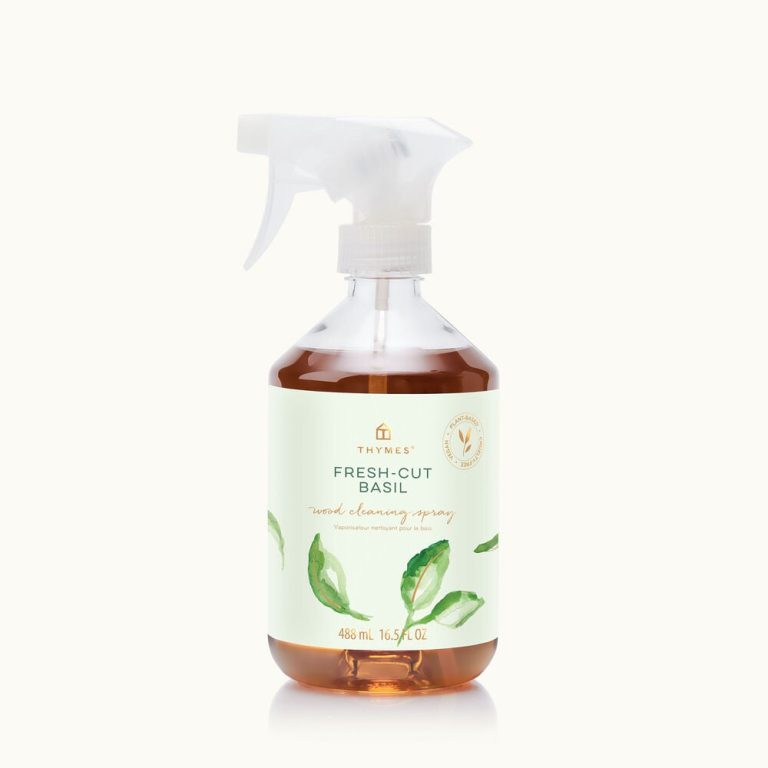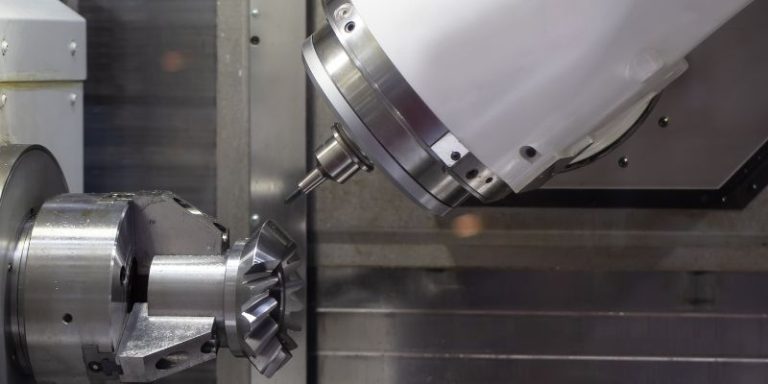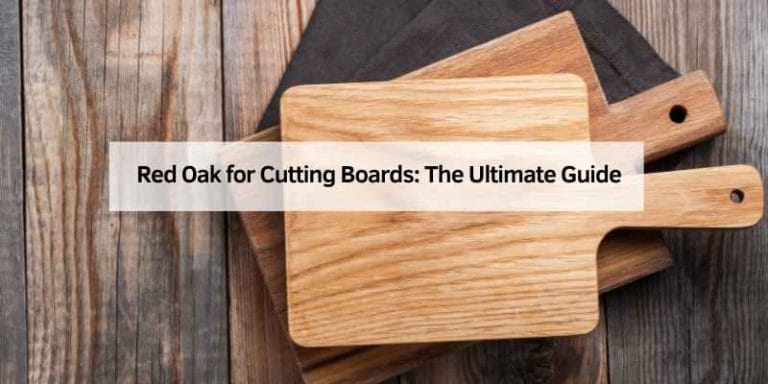Cutting Butcher Block Countertop: Expert Tips for Precision Cuts
To cut a butcher block countertop, use a circular saw with a guide for precision and safety. Measure and mark the desired cut line before cutting.
Cutting a butcher block countertop requires careful planning and precise execution to achieve a clean and professional finish. Whether you are customizing the size of your countertop for a kitchen renovation or another project, following the proper steps is essential for success.
In this guide, we will explore the tools and techniques needed to cut a butcher block countertop effectively. By understanding the process and taking your time, you can ensure a seamless and accurate cut that meets your specific needs. Let’s delve into the details of how to cut a butcher block countertop with confidence and precision.
Choosing The Right Tools
When it comes to cutting butcher block countertops, selecting the right tools is crucial for a successful and precise outcome.
Types Of Saws
There are various saws that can be used for cutting butcher block countertops, each with its own advantages and limitations.
- Circular saws: Suitable for straight cuts, but may cause splintering.
- Jigsaw: Ideal for curved cuts and intricate shapes. Requires a steady hand.
- Table saw: Provides accurate cuts with adjustable settings for different thicknesses.
Selecting The Right Blade
Choosing the appropriate blade for your saw is essential to achieve clean and smooth cuts on the butcher block countertop.
- For circular saws: Opt for a fine-tooth blade to minimize splintering.
- Jigsaw blades: Use a blade with fine teeth for improved precision.
- Table saw blades: Select a blade designed for hardwood cutting for optimal results.
Ensuring you have the right tools and blades before beginning the cutting process will help you achieve a professional finish on your butcher block countertop.
Preparing The Butcher Block Countertop
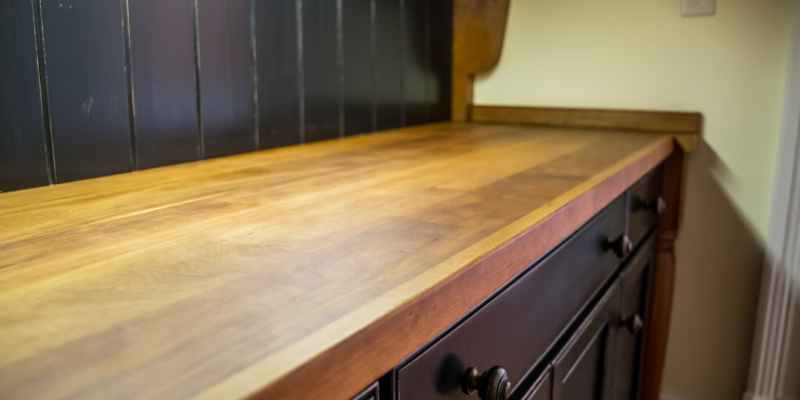
Before cutting the butcher block countertop, ensure it’s been properly prepared. Sand the wood to smooth surfaces, apply a food-safe finish, and let it dry. This will protect the countertop and prevent it from developing unsightly stains and damage.
Measuring And Marking The Cut Line
Firstly, accurately measure and mark the cut line on the butcher block countertop.
Securing The Countertop
Secure the countertop in place using clamps or sturdy supports to prevent movement.
Protecting The Surface
Protect the surface from splintering by applying painter’s tape along the cut line.
Making The Precision Cuts
When it comes to cutting a butcher block countertop, precision is key. Whether you’re installing a new countertop or simply making adjustments to an existing one, knowing how to make precise cuts can make all the difference. In this section, we will be discussing the steps involved in making precision cuts on a butcher block countertop.
Using A Circular Saw
To make accurate cuts on your butcher block countertop, a circular saw is an essential tool. Start by ensuring that your circular saw is fitted with a fine-toothed, carbide-tipped blade. This type of blade is specifically designed for cutting through dense materials like wood and will provide you with cleaner and smoother cuts.
Before starting the cut, make sure to measure and mark the desired dimensions on the countertop surface. Be precise in your measurements, as accuracy is crucial for a seamless fit.
Guiding The Saw Along The Cut Line
Once you have marked your cut line, position the circular saw along the marked line, ensuring that the blade is aligned with the line. Hold the saw firmly with both hands, keeping your body stable and balanced.
When starting the cut, gently ease the blade into the countertop, applying steady pressure to maintain control. It is important to let the saw do the work and avoid forcing it through the wood, as this may lead to uneven cuts or splintering of the butcher block.
Ensuring A Straight And Smooth Cut
As you guide the saw along the cut line, it is crucial to maintain a steady and consistent pace. Avoid rushing the process, as this can compromise the quality of the cut. Move the saw in a smooth and fluid motion, ensuring that the blade remains on the marked line throughout the cut.
To further enhance the precision of your cut, use a straightedge or a guide to help you maintain a straight line. This can be especially helpful when making longer cuts or when working with less experienced hands.
Additionally, consider using clamps to secure the countertop in place. This will prevent any shifting or movement during the cutting process and ensure a more accurate and level cut.
In conclusion, making precision cuts on a butcher block countertop requires the right tools, careful measurements, and a steady hand. By following these steps and taking the necessary precautions, you can achieve clean, straight, and seamless cuts that will enhance the overall appearance and functionality of your countertop.
Finishing Touches
Finishing touches make all the difference when it comes to cutting a butcher block countertop. These final steps ensure a smooth and protected result that will stand the test of time. Let’s explore the essential last steps in the process: sanding the cut edges and applying a protective finish.
Sanding The Cut Edges
Start by sanding the cut edges of the butcher block countertop to create a smooth and even surface. Use a sanding block or sandpaper to gently remove any rough patches or splinters left from the cutting process. Work methodically, ensuring that all edges are evenly sanded to create a seamless finish.
Applying A Protective Finish
Once the edges are sanded, it’s essential to apply a protective finish to the newly cut areas of the butcher block countertop. This will not only enhance the appearance but also protect the wood from moisture and wear. Choose a food-grade mineral oil or a specialized wood sealant, and apply it evenly using a lint-free cloth. Ensure complete coverage to safeguard the wood from everyday wear and tear.
Maintaining The Butcher Block Countertop
To maintain your butcher block countertop, regularly clean it with mild soap and warm water, and let it air dry completely. Apply mineral oil to protect the wood and prevent cracking or splitting. Keep the countertop away from direct heat and avoid cutting directly on the surface to preserve its durability.
Maintaining a butcher block countertop is essential to ensure its longevity and keep it looking its best. By following regular cleaning and sanitizing practices, and applying oil or conditioner when necessary, you can protect the wood and preserve its natural beauty for years to come.
Regular Cleaning And Sanitizing
When it comes to regular cleaning, use a mixture of mild soap and warm water to wipe down the surface. Be sure to avoid harsh chemicals that can strip the wood of its protective oils. Additionally, scrub the surface gently with a soft-bristle brush to remove any stubborn stains or residues. After cleaning, thoroughly dry the countertop with a clean cloth to prevent moisture from seeping into the wood.
Applying Oil Or Conditioner
To maintain the butcher block countertop’s luster and prevent it from drying out, it’s important to apply a food-safe mineral oil or butcher block conditioner regularly. Start by sanding the surface lightly to remove any imperfections, then apply a generous amount of oil with a lint-free cloth, allowing it to penetrate the wood for several hours. Wipe off any excess oil before using the countertop to prevent a greasy residue.
By incorporating these maintenance practices into your routine, you can keep your butcher block countertop looking impeccable while ensuring its durability and functionality for years to come.
Common Mistakes To Avoid
When cutting a butcher block countertop, avoid common mistakes like improper measurements and using the wrong tools for the job. Ensure straight cuts and proper sanding for a professional finish. Be mindful of the wood grain direction to prevent splintering during the cutting process.
Common Mistakes To Avoid When Cutting Butcher Block Countertop
When it comes to cutting a butcher block countertop, there are a few common mistakes that many people make. These mistakes can not only ruin the countertop but also make the entire process more difficult and time-consuming. In this section, we will discuss these mistakes and provide you with valuable tips on how to avoid them.
Incorrect Measurements
One of the biggest mistakes you can make when cutting a butcher block countertop is taking incorrect measurements. It is crucial to measure accurately before cutting to ensure that the countertop fits perfectly in your space. Making a mistake in measuring can lead to a piece that is too small or too large, resulting in wasted time and resources.
To avoid this mistake, make sure to measure the area where the countertop will be installed multiple times. Take precise measurements and double-check them to be certain of their accuracy. It is also wise to mark the measurements on the countertop itself before cutting to avoid any confusion.
Rushing The Cutting Process
Another mistake that many people make when cutting a butcher block countertop is rushing the process. Cutting a countertop requires time, patience, and attention to detail. It is important not to rush through the steps, as this can lead to mistakes and a poor-quality cut.
Take the time to plan out your cuts and make sure you have all the necessary tools and materials before you start. Use a slow and steady motion when cutting, ensuring precision and control. Rushing through the process is likely to result in uneven edges or crooked cuts.
Using The Wrong Type Of Saw
Using the wrong type of saw is another common mistake that can lead to a ruined butcher block countertop. A saw that is not appropriate for cutting wood can cause splintering, tearing, or chipping of the wood surface. This not only affects the appearance but also weakens the countertop’s integrity.
When cutting a butcher block countertop, it is essential to use a fine-toothed saw specifically designed for woodworking. This type of saw will give you clean and precise cuts without damaging the wood. Additionally, make sure the saw blade is sharp, as a dull blade can also result in jagged and imperfect cuts.
Safety Precautions
Wearing Protective Gear
Protective gear: Wear safety goggles and gloves to prevent injuries.
Ensuring A Stable Work Surface
Stable work surface: Ensure countertop is secure to avoid accidents.

Expert Tips And Tricks
Before cutting a butcher block countertop, ensure to clamp a straight edge securely in place.
Employ a scoring method to make cleaner cuts on the butcher block countertop.
Frequently Asked Questions Of Cutting Butcher Block Countertop
How Do I Prevent Splintering While Cutting Butcher Block Countertop?
To prevent splintering, use painter’s tape along the cut line and cut slowly with a sharp saw blade. Ensure you support the wood on both sides of the cut to minimize vibration and splintering.
What Tools Do I Need To Cut A Butcher Block Countertop?
You will need a circular saw with a fine-tooth blade, clamps to secure the wood, a straight edge as a cutting guide, and safety goggles and gloves for protection.
Can I Use A Jigsaw To Cut A Butcher Block Countertop?
Yes, a jigsaw can be used, but ensure you use a fine-tooth blade to minimize splintering. Clamp a straight edge as a guide to ensure precise cuts.
What Is The Best Way To Finish The Edges After Cutting A Butcher Block Countertop?
After cutting, you can use a sander to smooth the edges and then apply a food-safe finish, such as mineral oil or beeswax, to protect and enhance the wood. Be sure to sand and finish all exposed edges.
Conclusion
Cutting a butcher block countertop requires the right tools, patience, and precision. Following the proper steps ensures a clean and professional result. By measuring, marking, and using a circular saw or jigsaw, you can achieve the desired dimensions for your countertop.
Remember to wear safety goggles and take necessary precautions. With these tips, you can successfully cut a butcher block countertop and enhance the functionality and style of your kitchen. Happy cutting!

